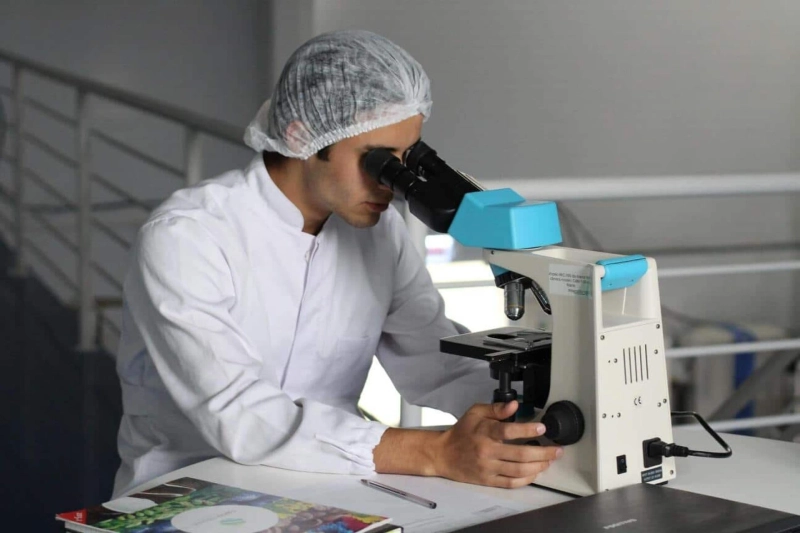Bioassays are used to determine the concentration and potency of a substance in a laboratory. The effect that a given substance has on living cells and tissues is analyzed during cell-based assays. Through this analysis, the potential efficacy of different substances in the treatment of various ailments is determined to facilitate the process of drug development. The potency of any given agent can be assessed accurately with a cell-based assay.
Scientists and researchers use these assays to observe the effects of a given substance on human and animal tissues over an extended period. This helps them detect potential biological hazards associated with new drugs, cosmetic products, health supplements, etc. The likely environmental impact of a new piece of technology can also be determined with the help of a high-quality cell-based assay or bioassay.
Improving the Performance of Cell-based Assays
For the best results in the realms of drug development and testing, effective bioassays must be set up and executed flawlessly. If a cell-based assay fails to perform as well as expected, this could create a setback in the process of drug development. The risk of a product being released into the market, while still containing certain potentially harmful substances due to the failure of a bioassay, is also ever-present.
Due to these reasons, researchers must be very careful when setting up and performing a cell-based assay to learn more about the potency of a given agent. For the best results, they should hire the services of a well-known and trusted laboratory, which has years of experience in performing cell-based assays. The experienced scientists employed by such a laboratory would have years of experience with bioassays, hence they would be able to improve the effectiveness and accuracy of such an assay when required.
Ways to Enhance Performance and Accuracy
Some of the most common and effective techniques frequently used to improve the efficacy of cell-based assays have been listed below.
Scientists need to accurately identify the different stages of a cell-based assay, such as the lag, log, and plateau stages, during which the cells being examined might transform visually or regarding their properties. Any changes, occurring in the cell morphology can indicate a change in the metabolism of the cell.
These transient alterations in the morphological properties of the cells being examined, and their changing metabolism, can have a great impact on the outcome of the assay. Therefore, the drugs being tested should be introduced to the culture at an early stage, when no morphological alterations have occurred. Scientists need to be very familiar with the cells, however, as what can be considered ‘normal’ will change from one cell line to another.
Some cell-based assays are set up using cultured cells that may require over a week of preparation. During such an extended period, the risk of evaporation is ever-present, even when the outer wells contain water or PBS. In such cases, evaporation may alter the concentration of salt and other media components in the sample being tested.
Placing the plates inside a hydration chamber for enhanced carbon dioxide permeation is one of the best ways of minimizing evaporation in long-term cultures. By doing this, scientists can trap the water vapor and thus decrease the extent of evaporation over a week.
During proliferation or cell death assays, adherent cells need to be evenly spaced out on a given surface for maximum efficacy. When the assay plate is moved from the hood to the incubator, a circular vortex of the media is created, causing the cells to accumulate around the outer edges of the well. As the cells all gather around the perimeters, the center of the well becomes ‘bald’ or empty.
This leads to many of the cells being deprived of the drug and other nutrients. Improper cell plating might adversely affect the accuracy and efficacy of the cell-based assay. If the cells are allowed to adhere slightly before the plate is moved to the incubator, significant abnormalities in the culture can be prevented.
At least half an hour must be set aside for substrate development in any cell-based assay that incorporates the development of luminescence and color. As numerous enzymes show maximum activity at 37 degrees Celsius, this is considered to be the ideal incubation temperature for most bioassays.
The creation of uneven temperature gradients in the plate might compromise the precision and accuracy of the bioassay. This happens when the plate is constantly being taken in and out of the incubator. If there is a variation of temperature in the same plate from one day to the next, this can cause sub-maximal activity in the enzymes and hamper the process of drug development.
Concluding Note
These are the common factors that help improve the efficacy and performance of cell-based assays in laboratories. Experienced scientists and researchers, employed by reputed laboratories, can make use of these attributes to get the most accurate results during the process of drug development.



